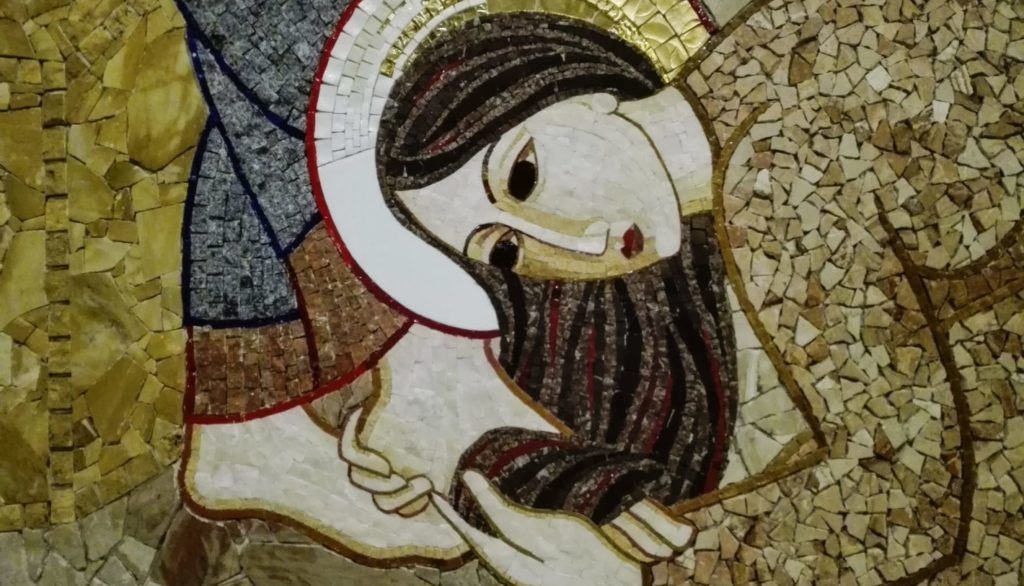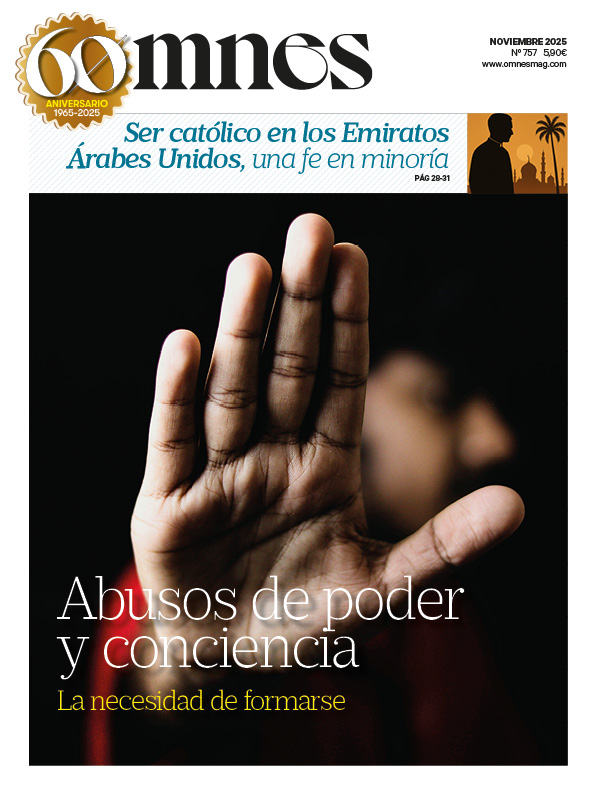In Germany, hundreds of thousands of people leave the Catholic or Evangelical Church every year, the vast majority to avoid paying church tax; whereas in the 1960s, more than 90% of the population belonged to the Catholic or Evangelical Church, today this figure is 52%, with a downward trend.
But, without being a mass phenomenon, there is also the opposite movement: every year, about 10,000 people are received into the Catholic Church; about half of them return after years or rather decades of having "left"; the other half come from other denominations or are baptized for the first time.
Theologian Christian Heidrich studied this phenomenon in a book published in 2002: "Die Konvertiten: Über religiöse und politische Bekehrungen" ("The Converts: On Religious and Political Conversions"). Recently, he gave a lecture at the Catholic Academy in Berlin, with updated data from his monograph.
Christian Heidrich differentiates between three types of conversions: the first is that in which a person changes religion or confession; in the second are those who had no religion and who "after a process of searching" adhere to one. As a third "figure" of convert he characterizes those who, after an inner process, "pass from a formal belonging to a community of faith to an authentic belonging". On the other hand, Heidrich contrasts the reactions aroused in the past by the conversion of famous intellectuals - who would be included in the first section according to his typology - with the indifference with which such conversions have been observed for some time.
First of all, he quotes the reaction of the Irish writer George Bernard Shaw when he learned that Gilbert Keith Chesterton had converted from the Anglican Church to the Catholic Church in 1922: "Dear GKC, you have really gone too far". Even more resounding was the reaction to Alfred Döblin's conversion among German intellectuals in exile: the famous author of Berlin Alexanderplatz invited a large representation of German exiles to his 65th birthday celebration on August 14, 1943, in the Californian city of Santa Monica; Thomas and Heinrich Mann, Bertolt Brecht, Peter Lorre, Lion Furtwängler, Franz Werfel, Max Horkheimer... The festive tone declined completely when Döblinan announced that he had converted to Catholicism; Brecht even dedicated a poem to him shortly afterwards entitled "an embarrassing incident".
Fundamental to Döblin's conversion was a two-month trip to Poland in 1924, during which he frequently visited the crucifix of St. Mary's Church in Krakow; in 1940 - he had been exiled from Germany in 1933 and was living in Paris - he had to spend, after the German invasion of France, a few weeks in a refugee camp in Mende. There he began to attend mass in the cathedral, which led him to be baptized - the writer was originally Jewish - once settled in California: he was baptized, with his wife and son, on November 30, 1941 in Hollywood. "However, the guests at his 65th birthday party wanted nothing to do with it," Heidrich concludes; "for them the announcement of the conversion was an embarrassing incident, a violation of ideological etiquette.
However, when, upon the death of the also famous writer Ernst Jünger in February 1998, it became known that a few years earlier he had converted to the Catholic Church - Jünger had been baptized as a child in the Evangelical Church -, public opinion hardly echoed this - for example, the Frankfurter Allgemeine Zeitung published an article on the subject in March 1999; "although many were surprised, it was far from a scandal," says Heidrich, contrasting it with the conversions of Chesterton and Döblin.
Christian Heidrich cites, as a paradigm of his second "type", the conversion of a young, well-known CDU politician: Philipp Amthor, born in 1992, who was baptized in December 2019 in the chapel of the Catholic Academy in Berlin. Amthor grew up with his mother in a single-parent family in the small town of Torgelow in the Land of Mecklenburg-Vorpommern, where almost 80% of the population does not belong to any religious denomination. Philipp Amthor first attended a religious ceremony, an ecumenical service, at the age of 17, encouraged by a friend. Friedrich comments: "It seems that this was not an immediate conversion, but rather the beginning of a religious search, in a twofold sense: on the one hand, the intellectual search by the hand of Introduction to Christianity of Josef Ratzinger - once he read the book, according to Friedrich, "the question of transcendence, ultimately the search for God, became a concern that never left him again" - and on the other hand, the example of a friend who consistently lived his faith.
In this context the theologian mentions the case of another young person - Anna-Nicole Heinrich, who was elected last May president of the Evangelical Synod at the age of just 25, after being part of the Synod as a youth representative since 2015: "her religious biography is the opposite of the traditional or classical one: the family, coming from Thuringia, had no connection with Christianity; after moving with her family to the Upper Palatinate, at school she was told: 'there is no such thing as not being baptized here'. Anna-Nicole decided to take the evangelical religious classes and was baptized shortly afterwards".
The paths followed by Philipp Amthor and Anna-Nicole Heinrich are certainly in the minority, but "their path to the faith seems to me to have a great future, because the traditional ways of transmitting the faith are being blinded at an accelerated pace. So there is still the path of the personal search, both the intellectual encounters that make one feel the restlessness to ask oneself the question of God, as well as the look towards consistent Christians", comments Friedrich.
Christian Heidrich described the third "type" of convert as one who "finally puts into practice his baptismal certificate, his formal affiliation to a community of faith through a subsequent conversion; thus, a formal affiliation becomes an authentic one". The archetype would be St. Francis of Assisi, "whose religiosity in the first two decades of his life corresponded to that of a son of the well-to-do bourgeoisie of the High Middle Ages, and then, in a mixture of personal crises and mystical experiences, he received his vocation". But also today," concludes the German theologian, "there are people in all religious communities who have realized, from very different experiences, that the Gospel is not just pious words, but that Christianity can be something more than a few rituals that are fulfilled at Christmas or Easter.








